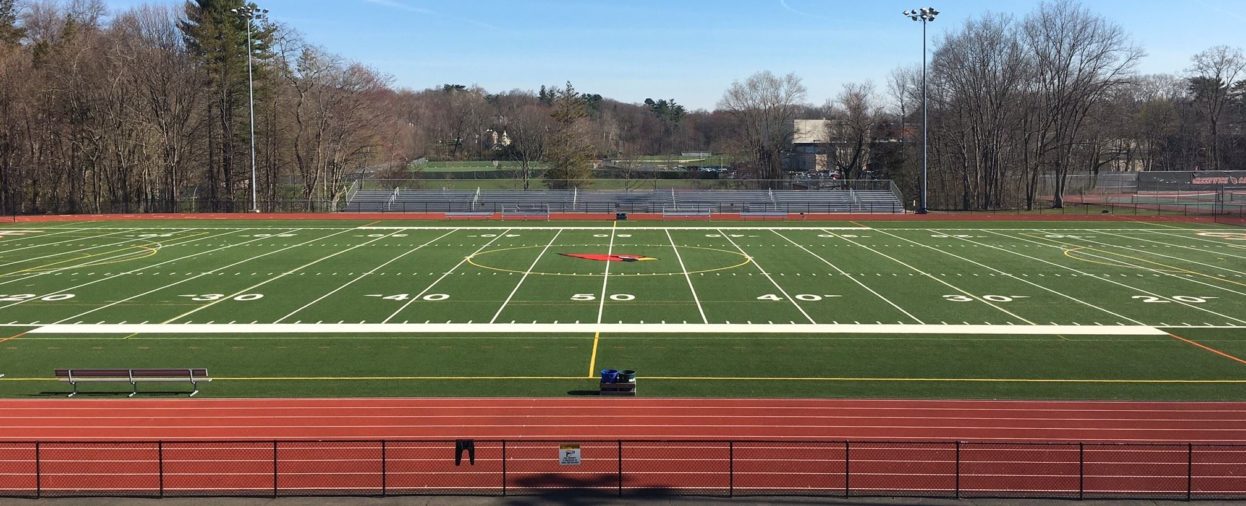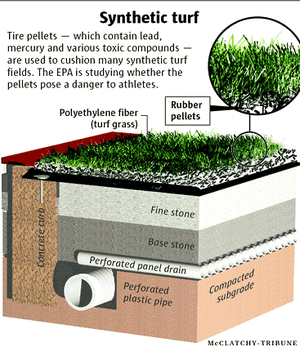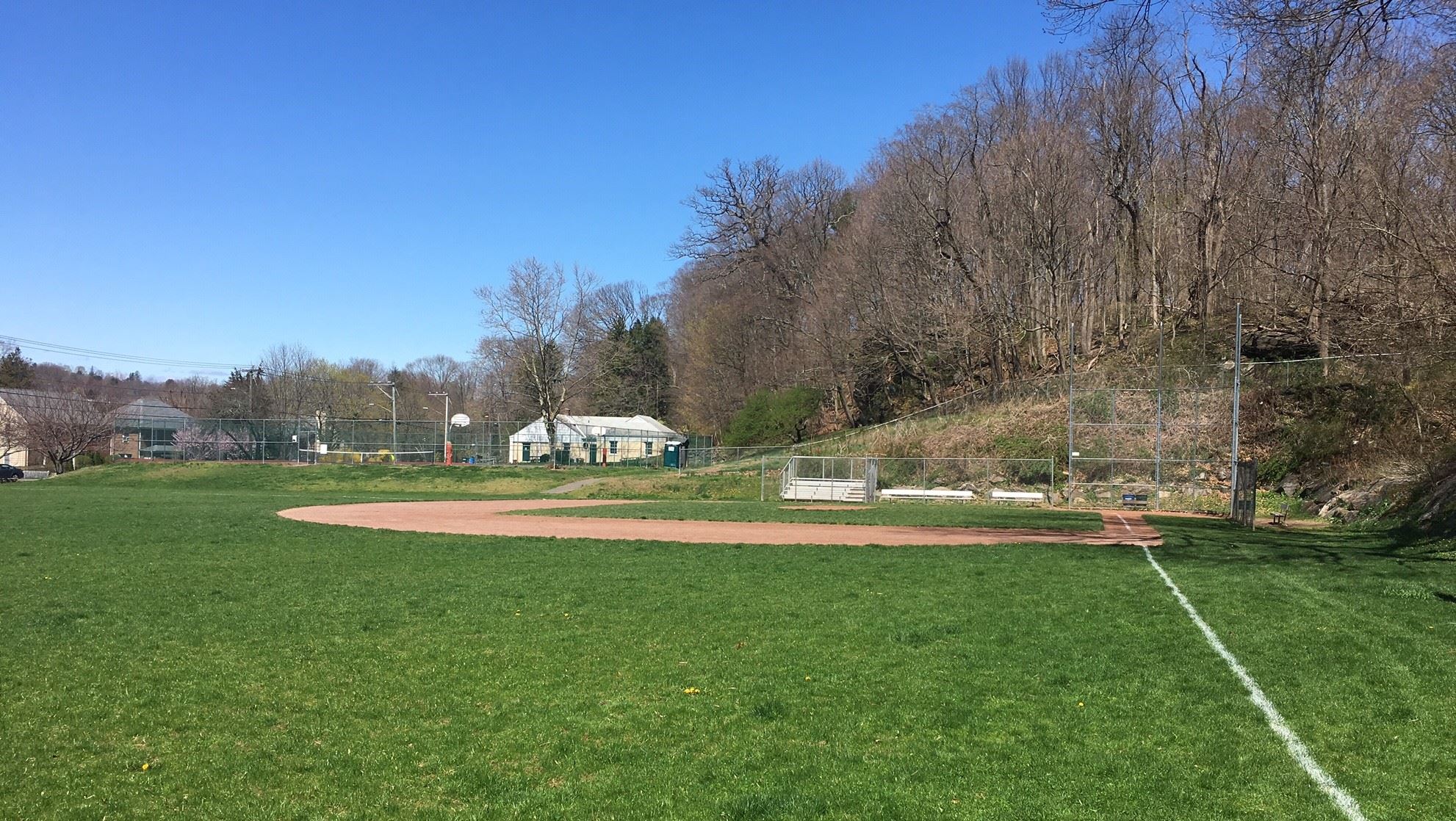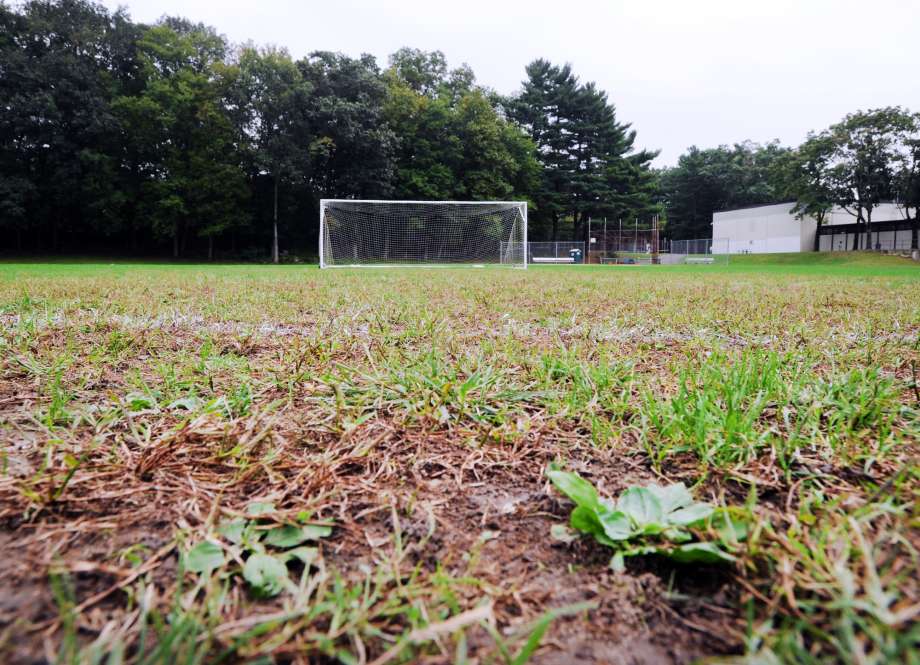
If you have seen Mark Ruffalo’s disturbing film “Dark Waters,” you may wonder whether the issue of choosing artificial turf over natural grass for Greenwich playing fields has something similarly sinister going on beneath the surface.
Are big corporations, such as Tarkett and Integrated Turf Solutions, that see a huge profit in installing as many artificial turf fields as possible selling a “bill of goods”? A 2016 study by Up Market Research put the value of the global market for artificial turf at $2.5 billion and forecast it to rise to a staggering $5.8 billion by 2023. Are these multinational corporations on a campaign to downplay the negative health consequences of their product on young athletes in order to persuade parents and other town stakeholders that artificial turf is a better alternative to natural grass? Whatever your leanings are, the issue warrants a deeper dive into the pros and cons of each surface, as well as the financial implications for the town.
Part 1: Under the Hood of Artificial Turf
Today’s turf fields are made up of plastic blades of grass affixed onto a backing material−usually made of polyester tire cord−and an infill of crumb rubber.  The process by which those little plastic blades are made reacquaints anyone who saw “Dark Waters” to the forever chemicals known as PFAs (per- and poly-fluoroalkyl substances) that cause multiple problems to humans and to the environment. These chemicals are added to the grass blades during the manufacturing process in order to achieve their uniform size and shape. On hot days, the PFAs heat up and leach into the environment and also into athletes’ lungs and bloodstreams via inhalation.
The process by which those little plastic blades are made reacquaints anyone who saw “Dark Waters” to the forever chemicals known as PFAs (per- and poly-fluoroalkyl substances) that cause multiple problems to humans and to the environment. These chemicals are added to the grass blades during the manufacturing process in order to achieve their uniform size and shape. On hot days, the PFAs heat up and leach into the environment and also into athletes’ lungs and bloodstreams via inhalation.
The crumb rubber infill is made by shredding and grinding old tires until they are the size of small grains of rice. It has been estimated that it takes up to 40,000 shredded tires to produce enough infill for just a single artificial turf field. That sounds great, especially for keen environmentalists and recyclers, but this must be tempered with a note of caution as tires themselves are pretty toxic. In addition to being made of a mixture of natural and synthetic rubber, petroleum products, carbon black and metals such as cadmium, lead, and zinc, tires also pick up other chemicals during their lifetimes such as arsenic, phthalates and volatile organic compounds (VOCs). Alarmingly, of the 92 chemicals found within crumb rubber, 11 have been identified as known or suspected carcinogens, while many of the other compounds present have not been adequately tested for their impact on human health. These are the chemicals that our children are potentially being exposed to on a daily basis.
Part 2: Performance and Maintenance of Fields

Advocates for artificial turf cite predictability and convenience as their main reasons for preferring that surface. Many athletes say they prefer the smooth playing surface that artificial turf provides, and they often point to how natural grass degrades over the course of a season until there are bald, dusty or muddy patches and ruts that present risks of injuries from tripping and falling, such as sprained or broken ankles.
Natural grass fields often do not drain adequately after heavy rains and become unplayable−like the fields at Central Middle School and Eastern Greenwich Civic Center, which cause inconveniences for the teams and coaches who have to reschedule or even cancel games.
Natural grass does have the advantage of being cooler than turf, which can be 40-60° higher than the air temperature. Even on days over 90°, natural grass fields rarely go above a surface temperature of 72° because of the cooling effect of the grass. This is a consideration not just for the athletes playing on the fields, but also the people using adjacent properties. Artificial turf contributes to a heat island effect, so schools and homes near artificial turf will be hotter and will require more mechanical cooling. According to a study by James Beard and Robert Green, maximum daily canopy temperatures of a green, growing grass was found to be 38° cooler than a brown dormant turf and 70° cooler than a synthetic surface.
Maintenance procedures used to keep artificial fields in a perfect, manicured state carry some risks. Flame retardants are commonly used to keep fields sterile, and herbicides−surprisingly perhaps−need to be applied to stop crabgrass and other stubborn weeds from growing in and underneath the turf.
Part 3: Health and Safety on the Field

There are a large number of injuries and illnesses attributed to artificial turf. The little plastic blades are rougher and more rigid than natural grass and can cause distressing symptoms, such as blistered skin, as well as more serious skin abrasions known as “turf burn,” which can lead to antibiotic-resistant MRSA (Methicillin-Resistant Staphylococcus Aureus) infections.
It is interesting to note that artificial turf was initially partly created with the intention of preventing head injuries, as it was thought that the crumb rubber would cushion the blows from impact, However, artificial turf is installed on an asphalt base so turf fields are−contrary to their original manufacturers stated intent−less absorbent, less forgiving surfaces and pose a far greater risk of serious injury like concussion, bone fractures and knee injuries.
An NCAA study examined football injuries from 2004-2015 and concluded that out of 3,009,205 athlete exposures, there were 2,460 knee injuries, and of those, athletes who played on artificial turf were almost three times as likely to have a particular kind of knee injury−a PCL (posterior cruciate ligament) tear than those who played on natural grass. (With other types of knee injuries such as MCL or ACL, there was no significant difference.)
There is also the specter of cancer, which cannot be ignored. There is an ongoing study by the federal government that confirms artificial fields contain many carcinogenic chemicals, but the health portion has not been completed, and won’t be for many years. Without a better understanding of the link between cancer and artificial turf, is it wise to pursue installation of artificial turf that may endanger children’s health−and the fiscal health of our town?
Part 4: Costs−Upfront and Hidden

Greenwich is currently looking to renovate and upgrade many public-school athletic fields, at a significant cost to the taxpayers. It would be wise to know exactly what we will be getting for our money, both for the sake of our current school community and for future generations of students. These are major decisions involving 8-10-year investments and many millions of taxpayer dollars.
The cost to install artificial turf varies according to the condition of the existing fields. Greenwich has a serious problem with toxicity and poor drainage in the fields at Western Middle School and Greenwich High School, so soil remediation and removal costs must be included. Installation costs for one football field could be as high as $1 million. The average annual maintenance cost for an artificial turf field is around $20,000 and the one-time cost of purchasing the necessary equipment (assuming there is already some equipment that can be used) would be around $50,000.
By contrast, the most expensive type of natural grass (soil-less) costs only $600,000 to install for a single field. Given the poor condition of the soil underneath many of the school fields in Greenwich, soil-less fields would be the best choice as the base is 99% sand. These soil-less fields have the best drainage capabilities, but they do require the installation of fairly extensive fertilization and irrigation systems, which add to the initial costs, perhaps by as much as $100,000.
The cost of maintenance equipment and the cost of annual maintenance of a soil-less field would be roughly similar to turf. The big difference would be that a soil-less natural grass field that is well maintained and has excellent drainage can last forever, whereas a turf surface must be replaced every 8 to 10 years, and the cost of disposing of the used turf increases every year. It can cost as much as $190,000 to have the enormous bales of turf removed from just one field and either taken to a recycling facility (this is increasingly difficult due to the current lack of a market for US recyclables) or, much to the detriment of the environment, to the landfill or incinerator.
Another hidden cost of turf involves lawsuits either against the artificial turf companies for installing problematic and faulty fields, or in defending those brought by parents for causing harm to their children. These kinds of lawsuits are, unfortunately, proliferating across the country.
Natural fields are the best option when considering the health of all our children and the long-term fiscal health of the town. Many Greenwich residents have already made their feelings known at public forums, and the vast majority are advocating for natural grass. Greenwich should want the best for our families and should position itself at the forefront of the national movement to reject artificial turf, which could prove, like those Teflon-lined products featured in “Dark Waters,” to have long-lasting and negative consequences for our communities.
Sources:
https://www.ehhi.org/turf-cancer-stats.php
https://cehn.org/crumb-rubber-artificial-turf/
https://www.safehealthyplayingfields.org/
https://www.health.ny.gov/environmental/outdoors/synthetic_turf/crumb-rubber_infilled/docs/fact_sheet.pdf https://www.ehn.org/hidden-gotcha-in-artificial-turf-installations-2641507579.html”>https://www.health.ny.gov/environmental/outdoors/synthetic_turf/crumb-rubber_infilled/docs/fact_sheet.pdf https://www.ehn.org/hidden-gotcha-in-artificial-turf-installations-2641507579.html
https://www.ydr.com/in-depth/news/2019/11/18/old-artificial-turf-fields-pose-huge-waste-problem-environmental-concerns-across-nation/2314353001/
https://sites.duke.edu/wcwp/tournament-guides/world-cup-2015-guide/all-about-that-turf/turf-vs-grass/
https://acsess.onlinelibrary.wiley.com/doi/10.2134/jeq1994.00472425002300030007x
Got Something to Say?